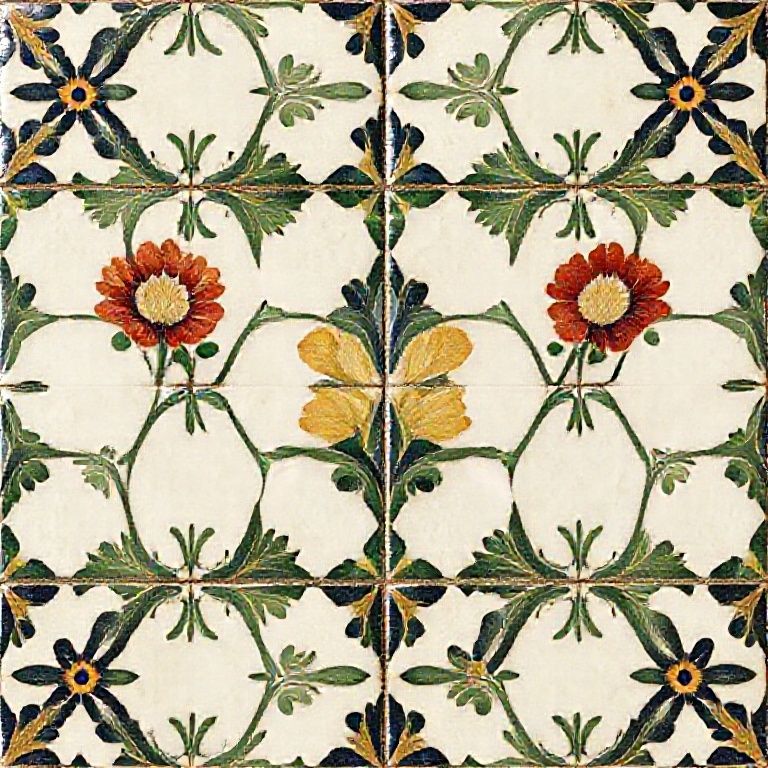Mexico is a country celebrated for its vibrant culture, rich history, and artistic traditions. Among the most visually striking elements of Mexican design are its beautiful and diverse tiles. From the intricate, hand-painted Talavera to the rustic, sun-baked Saltillo, Mexican tiles add character, warmth, and a touch of timeless elegance to any space. These aren’t just building materials; they are storytellers, reflecting the country’s unique blend of indigenous and European influences.
Whether you’re renovating your home, adding a splash of color to your garden, or simply seeking inspiration, exploring the world of Mexican tiles is a journey into the heart of Mexican artistry. Let’s delve into the beauty and distinct characteristics of Talavera and Saltillo tiles, two iconic styles that exemplify the best of Mexican craftsmanship.
Talavera Tiles: A Symphony of Colors
Talavera tiles are perhaps the most recognizable of all Mexican tiles. Originating in Puebla, Mexico, this style is heavily influenced by Spanish ceramics. The process of creating Talavera is meticulous, involving shaping the clay, applying a base glaze, and then hand-painting intricate designs. Traditional Talavera uses only six colors: blue, yellow, black, green, white, and occasionally orange. These vibrant hues, combined with elaborate patterns, create a stunning visual effect.
Uses of Talavera Tiles
- Kitchen Backsplashes: Talavera tiles add a pop of color and artistry to any kitchen, making it a vibrant and inviting space.
- Bathroom Accents: Use Talavera to create unique borders, shower accents, or even entire feature walls in bathrooms.
- Decorative Accents: Talavera tiles are frequently used to decorate fountains, planters, and other architectural elements.
- Murals: Larger-scale Talavera tile installations can create stunning murals, depicting scenes from Mexican history, culture, or nature.
Saltillo Tiles: Rustic Charm Underfoot
In contrast to the vibrant and ornate Talavera, Saltillo tiles offer a more rustic and earthy aesthetic. These tiles are named after the city of Saltillo in Coahuila, Mexico, where they have been produced for centuries. Saltillo tiles are made from clay that is extracted locally, shaped by hand, and then sun-baked. This natural drying process gives each tile a unique texture, color variation, and character.
The Unique Appeal of Saltillo
Saltillo tiles are known for their warm, earthy tones, ranging from light terracotta to deep browns and reds. Their irregular shapes and textured surfaces add to their rustic charm. Because they are handmade, no two Saltillo tiles are exactly alike, which creates a beautiful, organic look. Saltillo tiles are porous and require sealing to protect them from moisture and stains. This sealing process enhances their natural color and provides a durable finish.
Combining Talavera and Saltillo
While Talavera and Saltillo tiles have distinct styles, they can be beautifully combined to create unique and striking designs. Consider using Saltillo tiles as a flooring base and incorporating Talavera tiles as decorative accents. For example, you could create a Saltillo tile patio with a Talavera-tiled fountain or border. In a kitchen, Saltillo floors can be paired with a Talavera tile backsplash for a stunning contrast of rustic and vibrant elements.
Design Ideas
- Courtyard Oasis: Use Saltillo tiles for the flooring and incorporate Talavera tiles around a central fountain or in decorative planters.
- Kitchen Contrast: Pair Saltillo floors with a vibrant Talavera tile backsplash for a warm and inviting kitchen.
- Bathroom Elegance: Create a Saltillo tile shower floor with Talavera tile accents on the walls.
- Stairway Style: Use Saltillo tiles for the stair treads and risers, and add Talavera tiles as decorative accents along the edges.
Caring for Your Mexican Tiles
To ensure the longevity and beauty of your Mexican tiles, proper care is essential. For Talavera tiles, regular cleaning with a mild soap and water solution is usually sufficient. Avoid using abrasive cleaners or scrub brushes, as they can damage the delicate painted surface. Saltillo tiles require regular sealing to prevent staining and water damage. Depending on the amount of traffic and exposure to the elements, Saltillo tiles should be resealed every 1-3 years. Always follow the manufacturer’s instructions for cleaning and sealing your specific type of tile.
Conclusion
Mexican tiles, particularly Talavera and Saltillo, offer a unique way to infuse your home or garden with the vibrant spirit and artistic heritage of Mexico. Whether you are drawn to the intricate designs and vibrant colors of Talavera or the rustic charm and earthy tones of Saltillo, these tiles provide endless possibilities for creating beautiful and personalized spaces. Embrace the beauty of Mexican tiles and let them tell a story of tradition, craftsmanship, and timeless elegance in your home.
If you found this exploration of Mexican tiles inspiring, share it with your friends and family, and keep exploring Life in Mexico for more insights into Mexican culture and design!
IMAGE: A vibrant, sun-drenched courtyard in Puebla, Mexico. The ground is covered in warm, terracotta Saltillo tiles. A central fountain is adorned with hand-painted Talavera tiles in blue, yellow, and green, depicting traditional Mexican motifs. Bougainvillea flowers cascade over the walls, adding splashes of pink and purple. The overall mood is cheerful, inviting, and authentically Mexican. The style is colorful, rustic, and artistic, showcasing the beauty of Mexican craftsmanship.


